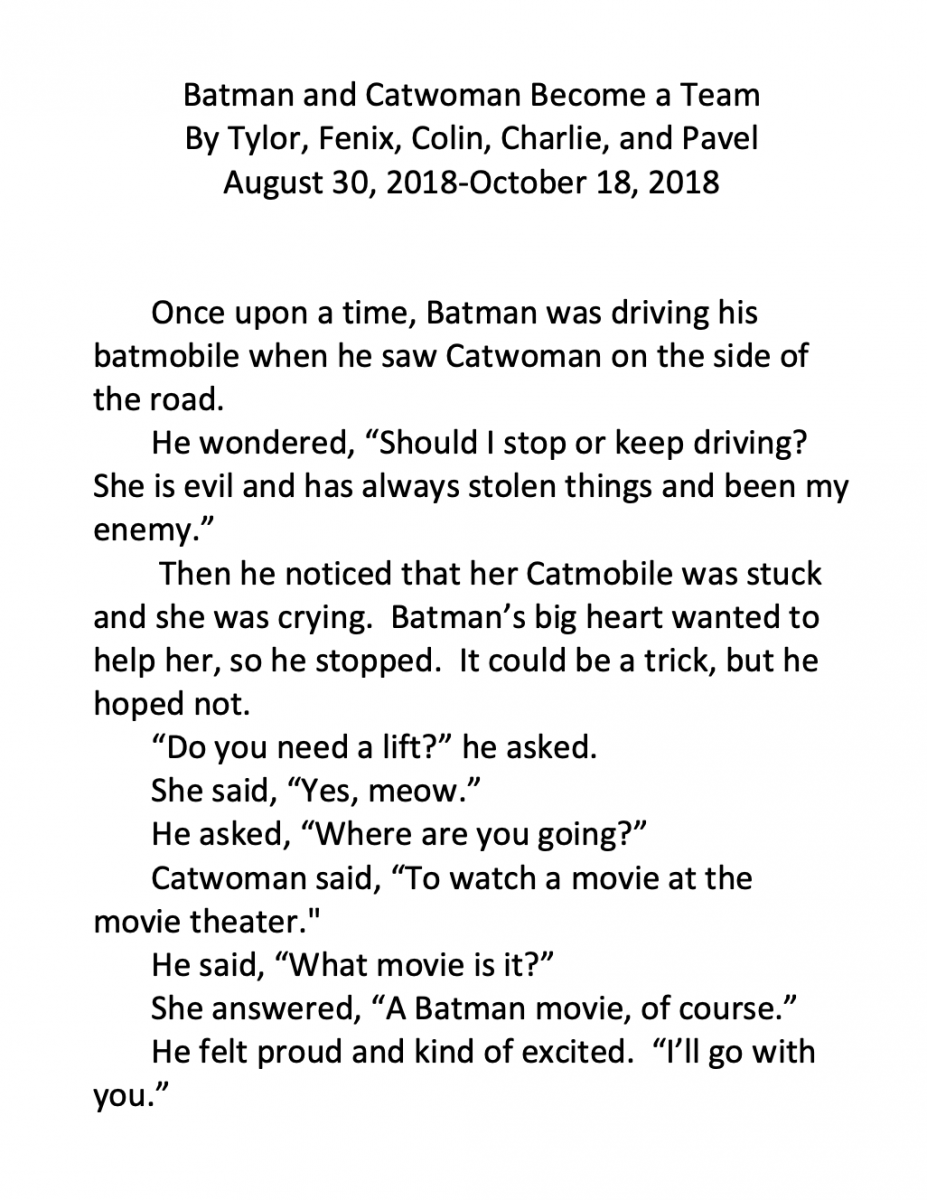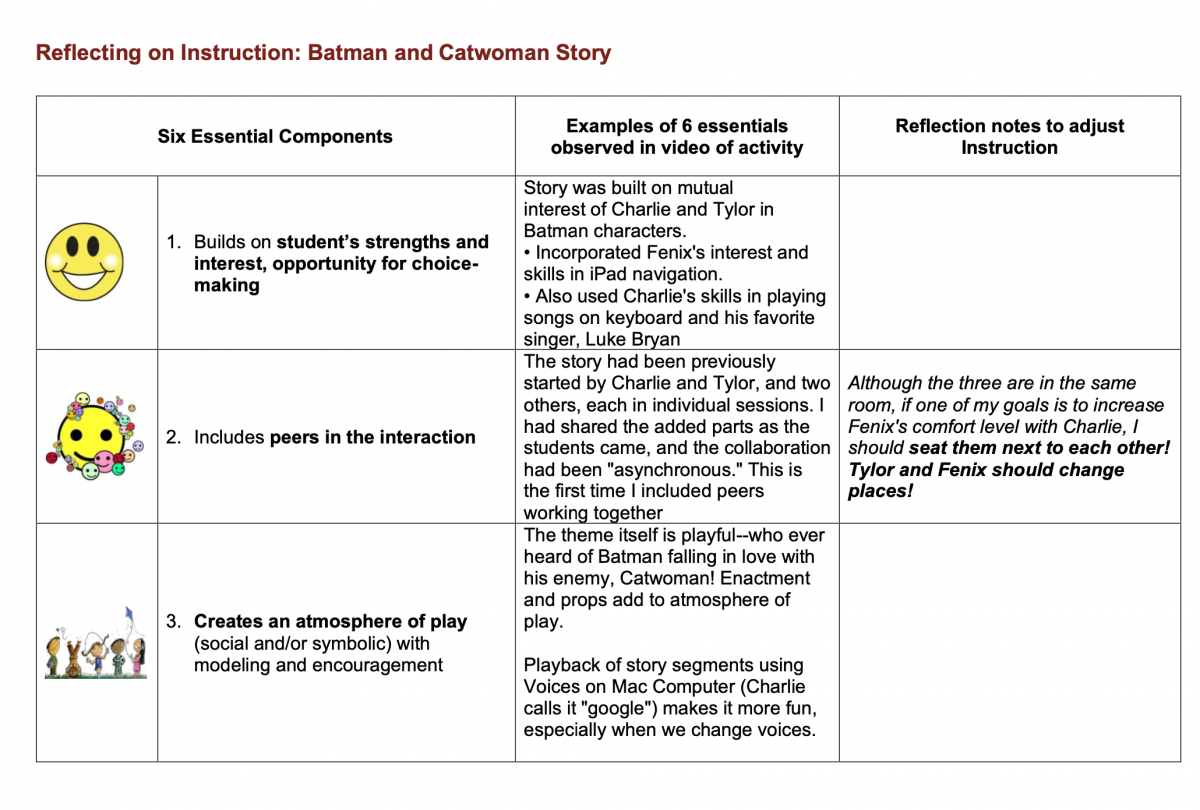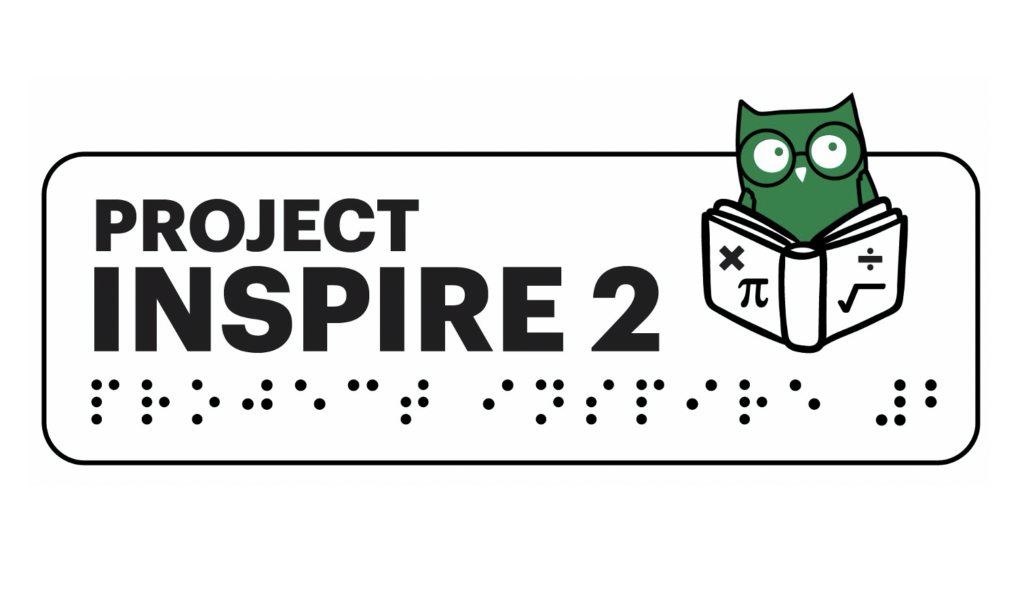By Linda Hagood
Background
In this video, you will see three of the five middle school collaborators on the lengthy Batman/ Catwoman story. Charlie, on my left, was a student who was being evaluated at Washington State School for the Blind. Charlie is totally blind, and has an additional diagnosis of autism.
He has limited expressive language skills, and might be described as being “minimally verbal.” Most of his expressive language is in memorized, scripted words or phrases, and he often echoes questions or just withdraws from interactions when prompted to communicate. As we got to know Charlie better, we realized that his language comprehension was quite a bit higher level than his expression. He really enjoyed play-based storytelling activities, and always had something to contribute, often initiating by suggesting characters, favorite songs, locations, or actions. He was more engaged in storytelling activities, including enactment components, than he was in typical classroom instruction. When given conventional verbal-only instruction, he typically put his head on the table, or echoed off topic words, especially in group contexts. He knew quite a bit of Braille, typically resisting it, but we found he enjoyed practicing writing favorite words on the Mountbatten Brailler, especially enjoying the electronic voice feature. Charlie also had special talents in the musical domain, and could usually replay almost any tune he had heard on the keyboard. In this video, his goal is to maintain engagement through active verbal or nonverbal participation in a group activity.
Beside Charlie is Tylor, who has many creative ideas, mostly based on Marvel comics characters. Tylor has CVI and is primarily an auditory and tactile-kinesthetic learner. His reading is at the emergent literacy level. Tylor speaks in complete sentences and attempts to use narrative length language to explain, describe or negotiate. Socially, he often serves as the “middle child” in any situation, helping others to negotiate and compromise, avoiding any situation that might trigger conflict. (Perhaps this is why I placed him in the middle between his two writing partners?). He struggles at times to recall words and one of his goals is to ask for more time to formulate communication when he gets stuck. Other goals are to describe problems and possible solutions in either real or hypothetical situations, and to use a wider variety of vocabulary words to describe feelings.
The next student in the group on this video is Fenix. Fenix is the most socially mature in the group, and his language skills are not considered impaired. He has low vision and is primarily an auditory learner. Fenix loves technology, and is skilled at using his iPad. He is also quite aware of social norms, and was somewhat reluctant to engage in communicative exchanges with Charlie. Even within the small and sheltered world of a school for the blind, teenagers work to find affiliations with their own groups of friends and are self-conscious about who they spend time with. Fenix wasn’t so sure about connecting to the new student Charlie, possibly due to his limited language skills. I was hoping that by spending time together in a smaller context, Fenix would come to accept Charlie and see some of Charlie’s special talents.

Reflection on Instruction
Linda Hagood shares her reflections on the Batman and Catwoman story.

Return to Playing with Words homepage.
- Epic Stories
- Two Robots Story
- Batman and Catwoman Become a Team
- Kermit and Katrina Stories
- Dog Man Story



